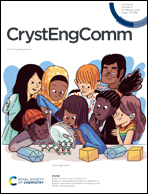Comparative study of epitaxial growth and Ni/GaN Schottky device on patterned sapphire substrates
Abstract
GaN epitaxial materials were grown on different patterned sapphire substrates (PSSs) with ex situ 30 nm-thick sputtered AlN nucleation layers using metal–organic chemical vapor deposition (MOCVD). Surface morphology, crystal quality, and strain of the as-prepared GaN epitaxial materials on different PSSs were analyzed. It is demonstrated that the GaN on sapphire flat and concave PSS is superior to that on convex PSS based on the results of atomic force microscopy (AFM) and X-ray diffraction (XRD) rocking curves. The strain of the GaN epitaxial layer on the sapphire flat has larger compressive stress than the PSS. Using cross-sectional scan electron microscopy (SEM) analysis, it was found that the inverted pyramidal pattern was not fully filled with the epitaxial layer. The reverse leakage mechanism of Ni/GaN Schottky diodes on different substrates is discussed, which shows better electrical performance on the concave PSS. The results indicate that the reverse bias leakage is sensitive to screw dislocations, but not edge or mixed dislocations, which provides evidence that the mechanism by which screw dislocation is influenced involves reverse leakage. This work provides some inspiration for device fabrication and performance optimization on patterned substrates in nitride devices.



 Please wait while we load your content...
Please wait while we load your content...